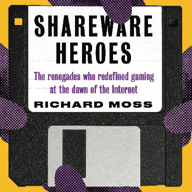Fun fact: Tom's *still* at it, a decade later (now around 79 years old, I think), and he's become world renowned for his work — he's even traded letters with famous typewriter enthusiast Tom Hanks.
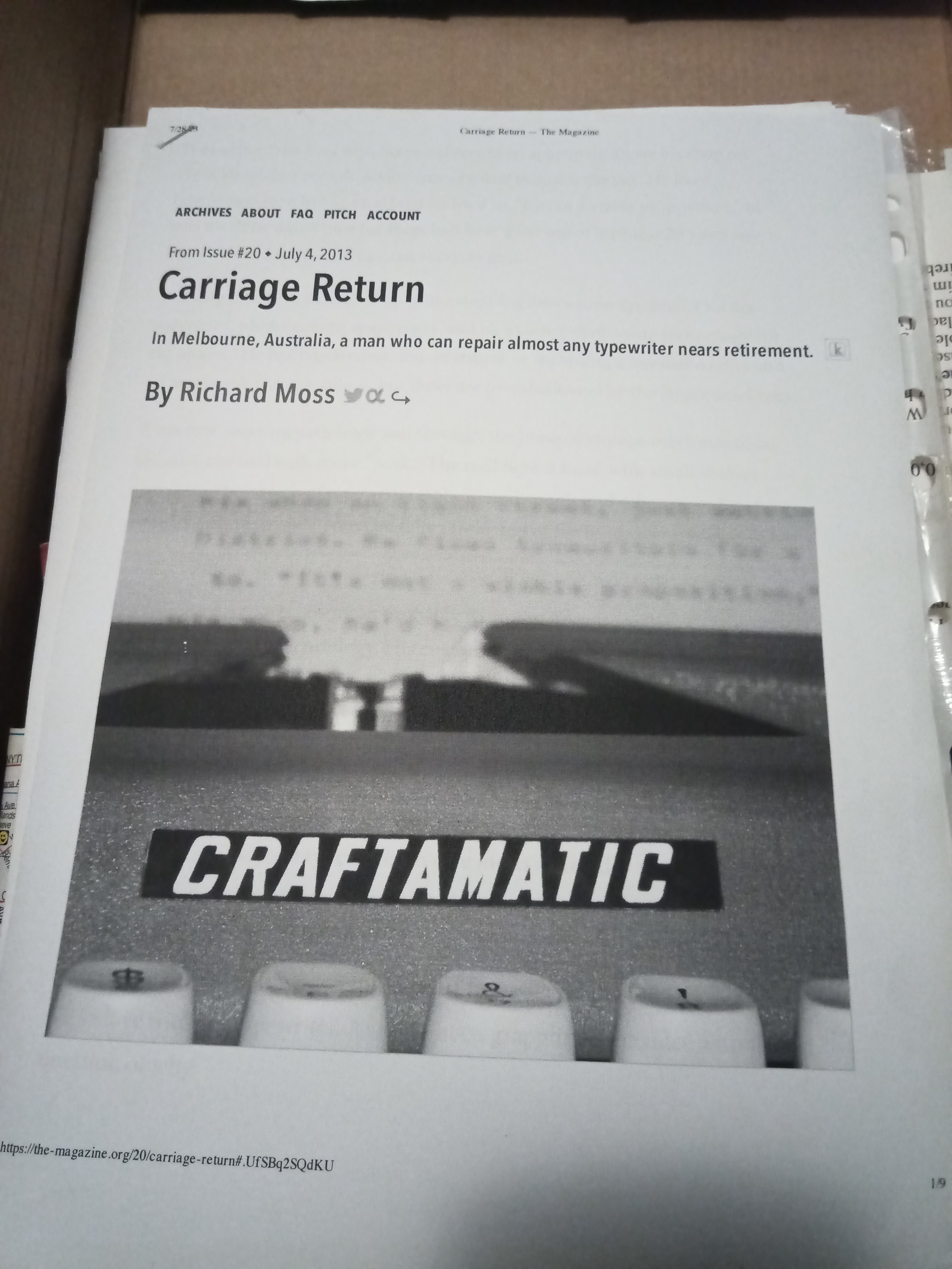
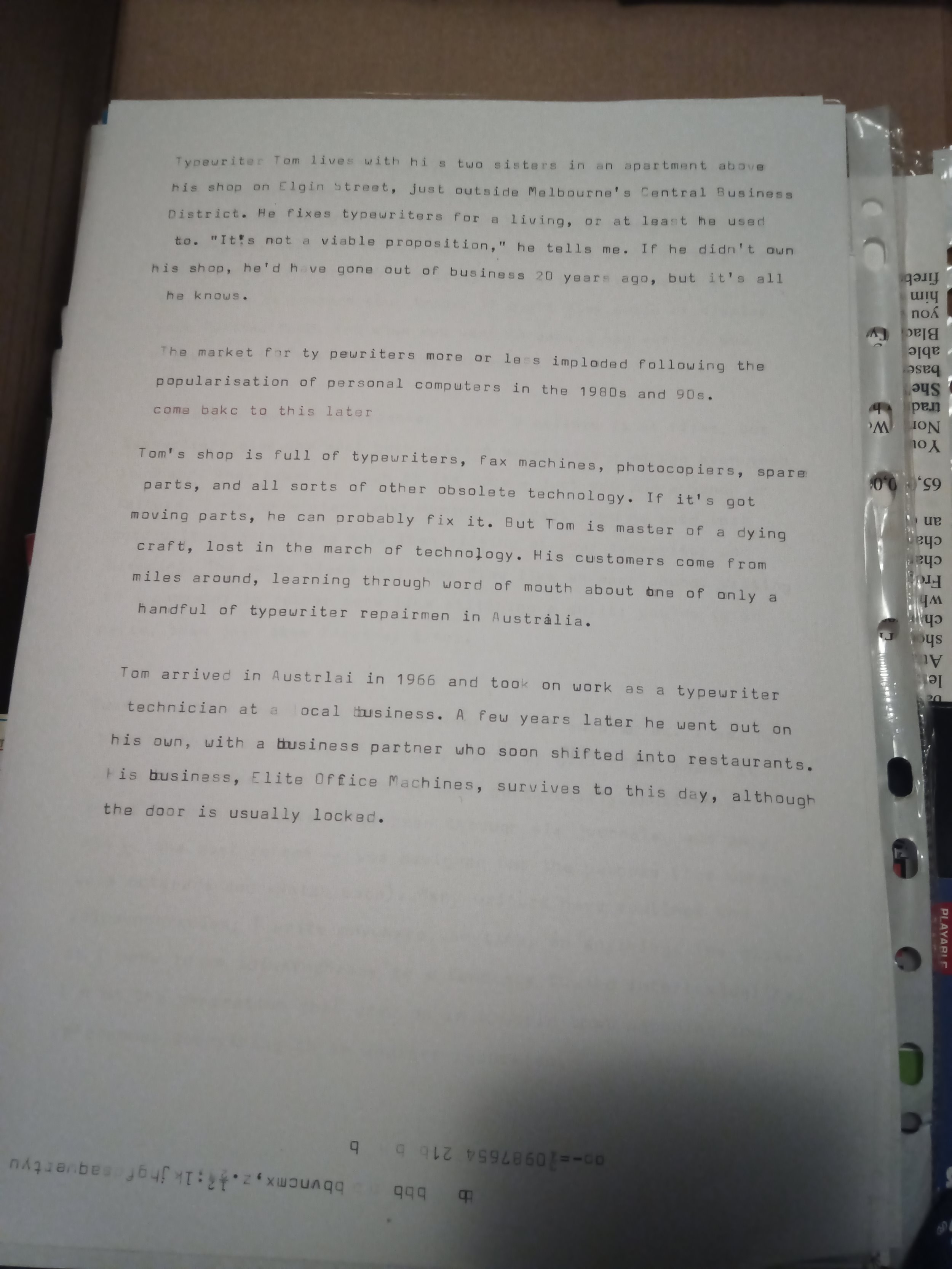
I'll see if I can revisit the cut ideas for the second book, which will have a broader (and I hope not too unwieldy) scope.
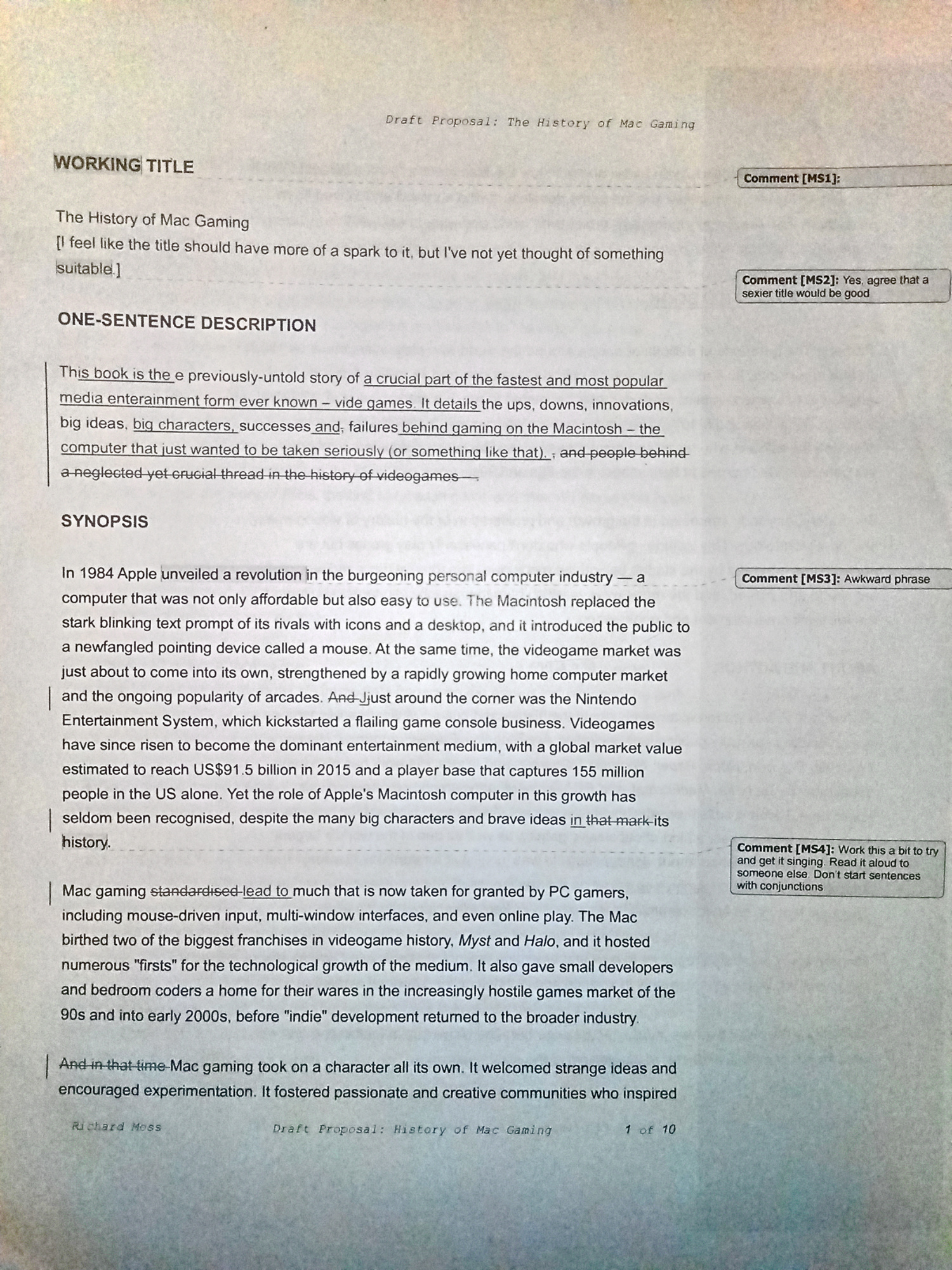
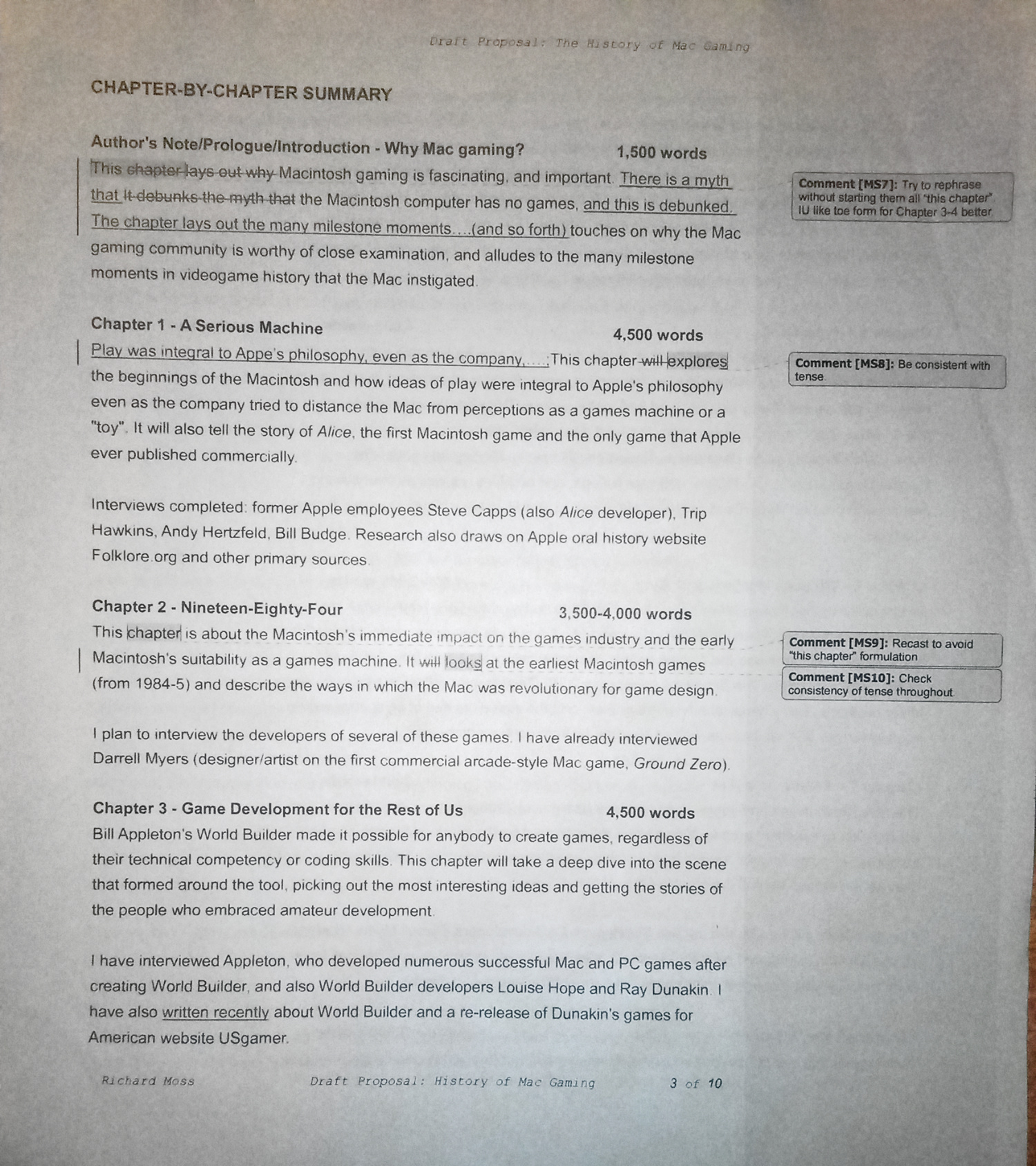
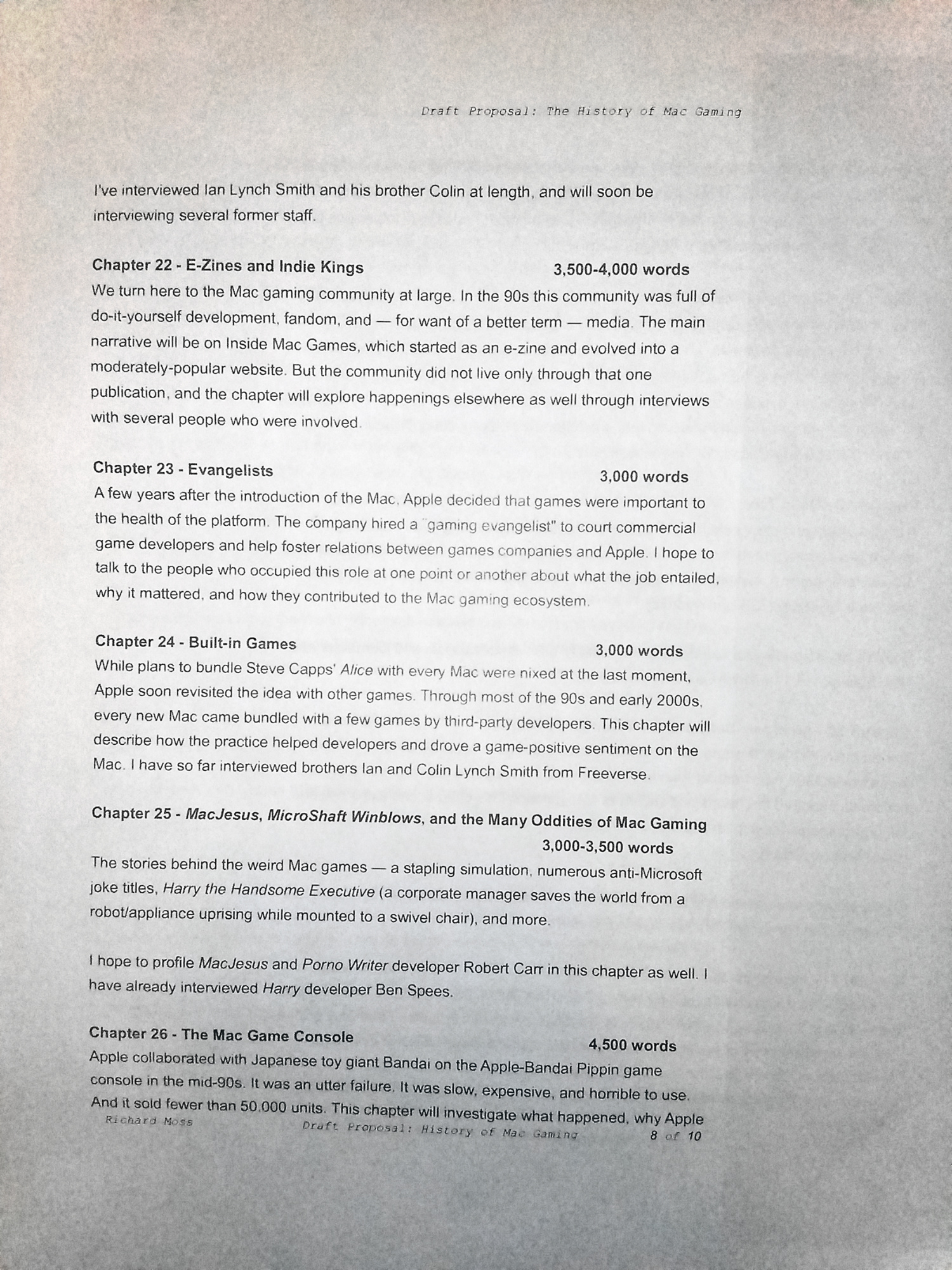
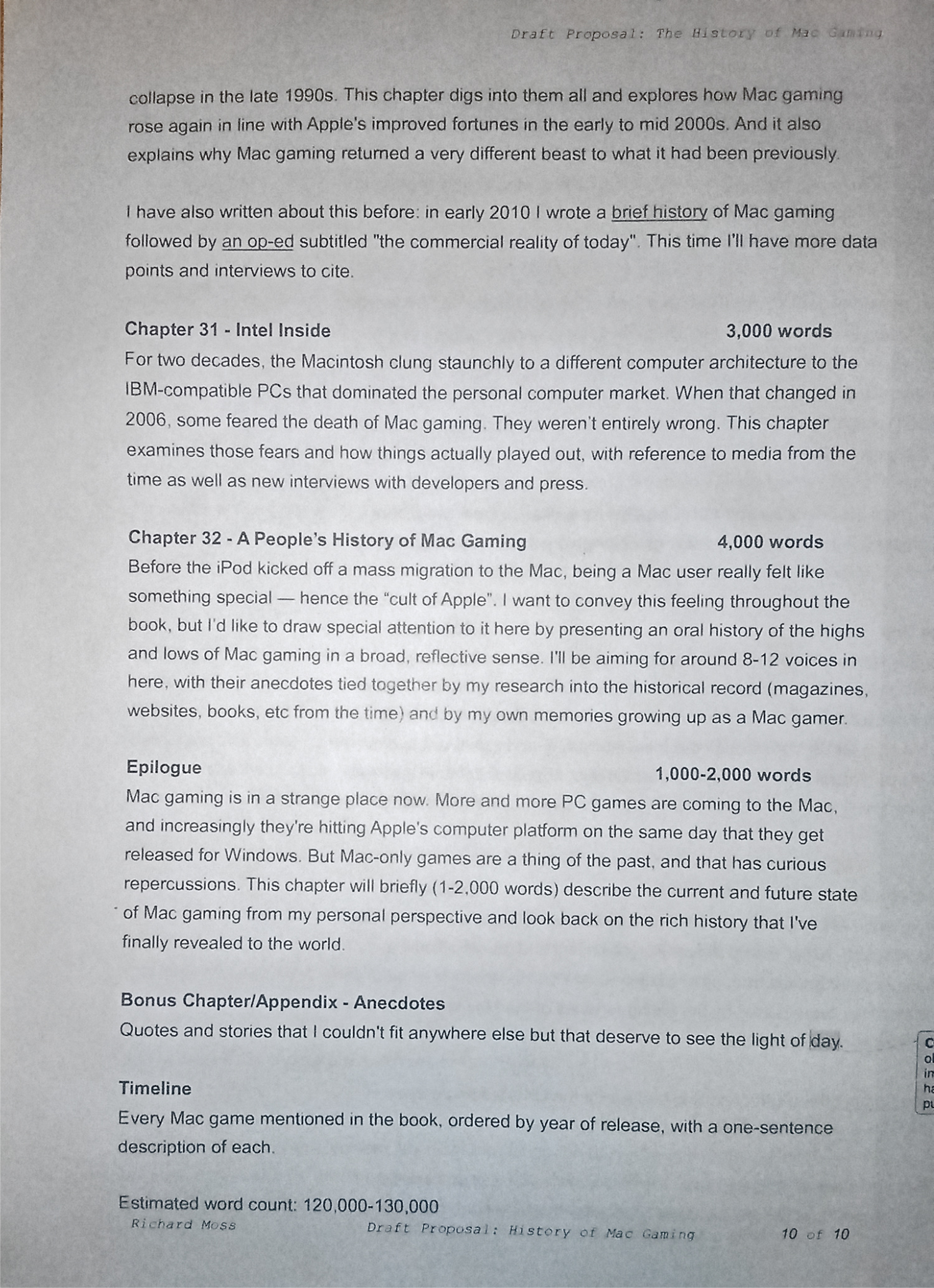
For Kotaku I did one of the most difficult features I worked on so far. I went out of my way to try and speak to people, only to receive vague threats. The history of what was supposed to be a celebration of Italy's 150th anniversary turned to a farce which echoed all around the world. The story of Gioventù Ribelle and how Meloni wanted to sponsor a video game. https://kotaku.com/georgia-meloni-italian-pm-fps-shooter-game-pope-unreal-1850163072
For the latest issue of my newsletter, I wrote about the work of @NanoRaptor! I find her tech photoshops endlessly fascinating, thought-provoking, and hilarious.
https://newsletter.shifthappens.site/archive/the-cursed-universes-of-dana-sibera/
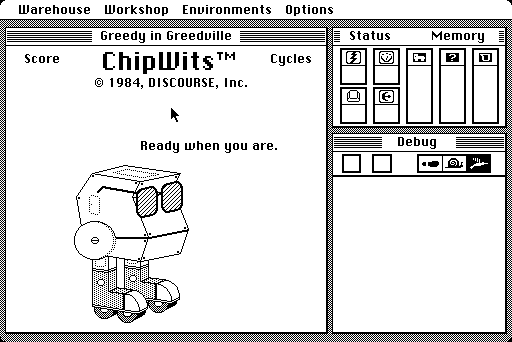
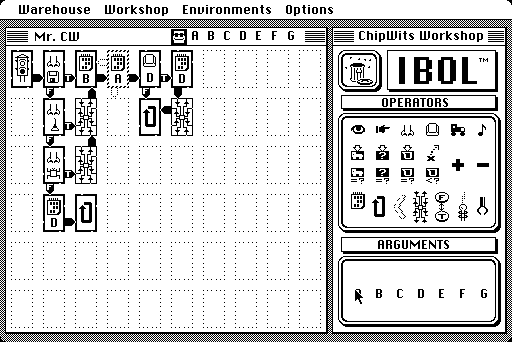
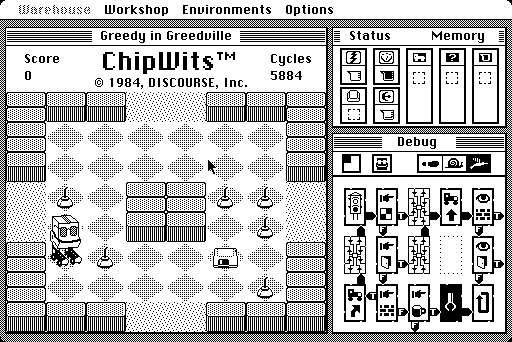
this morning i was looking for a copy of Klause Breuer's windows 95 conversion of ChipWits (a very popular programming game for the original #Macintosh), and was sorrowed to hear that he passed away ten years ago of a brain tumour 😢
it took several hours, but I managed to dig out several of his programs, including ChipWits, from the waybackmachine. To my knowledge, none of these programs have been on the web for over a decade.
i spent the day creating a memorial for a programmer whom i did not know personally, but used his software over a decade ago. i guess i hope that people can still enjoy his work even though he has left us.
... a kind of #worldwideweb #homepage in memoriam.
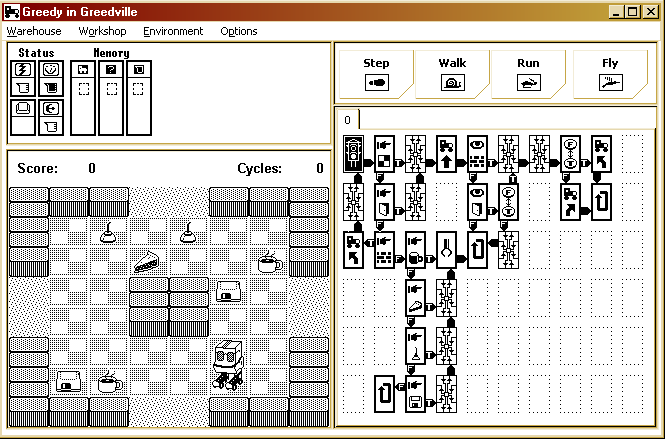
And thank you for reading it. I first learnt about Seumas via a fan of his games who hoped to see his work covered in my book, and I was similarly touched by the story I heard, so in a way I'm just paying it forward.
Seumas had been diagnosed Hodgkin Lymphoma three years earlier, aged 18. As his health declined, he defiantly made the best Breakout game ever, DX-Ball 2, with help from his family, then after meeting his hero John Carmack he dove into this more ambitious, innovative project.
He released the game on January 3rd, 2000, then accepted the IGF main prize March 10th, assisted by an oxygen tank and seated in a wheelchair. He died 11 days later. Carmack later penned a moving eulogy (see attached images).
In honour of his gamedev dream, his family continued making games under his company name, Longbow Digital Arts (now Longbow Games). They made the Hegemony RTS series and puzzle-platformer Golem. https://longbowgames.com
As my own tribute to Seumas McNally's legacy, and to the brilliance of his games, I told a longer version of his story to close out my new book, Shareware Heroes: The renegades who redefined gaming at the dawn of the internet. More info on the book at https://sharewareheroes.com
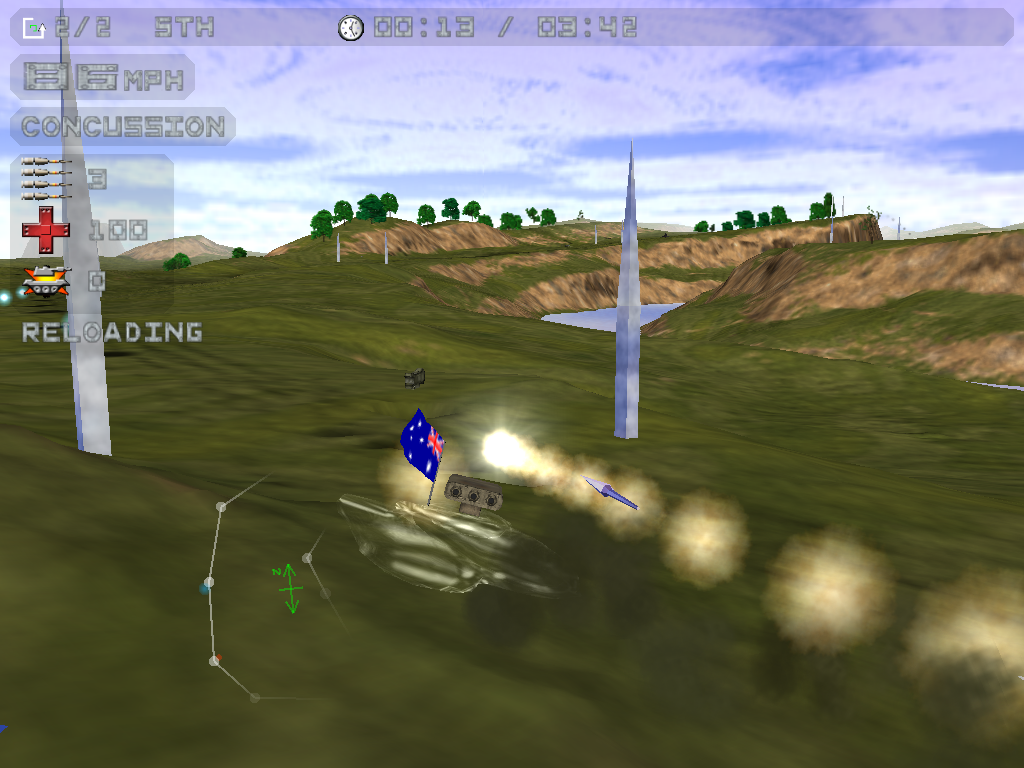
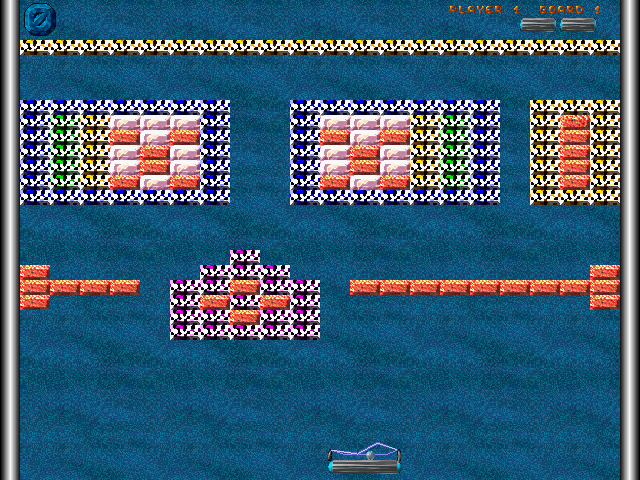
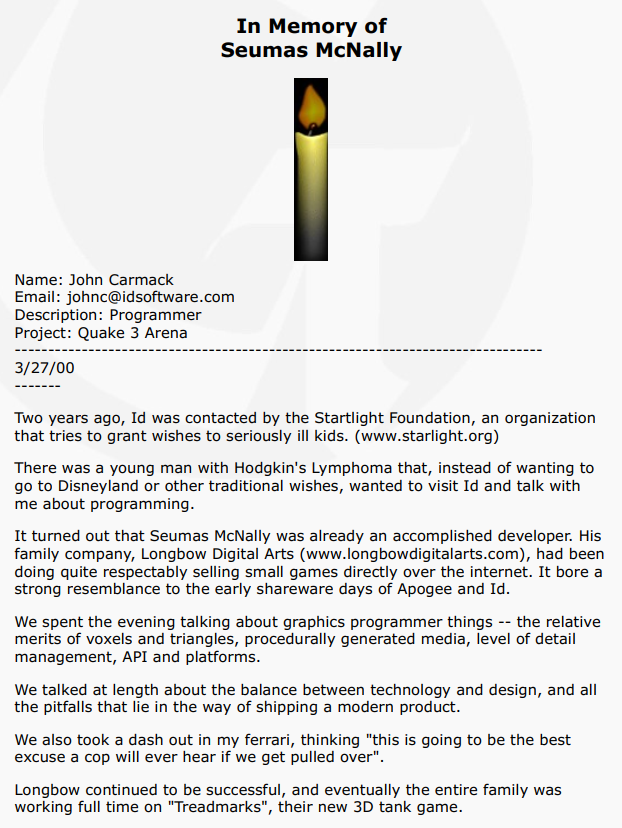
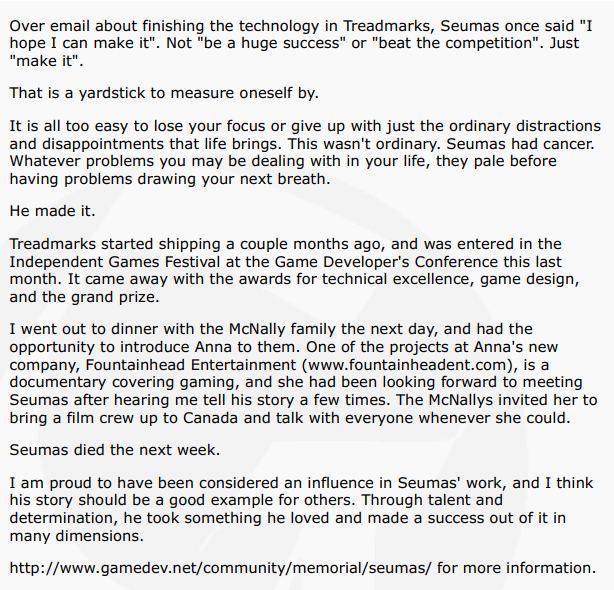
sometimes i come across #multimedia #art and #design projects that blow me away so completely that i end up spending the rest of the day just playing with them.
Ceremony of Innocence (1997) tells the story of two lonely strangers who fall in love through a series of postcards... all based on the novel Griffin and Sabine by nick bantock.
each postcard is lavishly decorated and animated. but what blew me away was the tactile, playful interactivity. sometimes postcards are pried apart, caressed, or tortured into opening... all with the mouse cursor.
voice acting by Isabella Rosselini, Paul McGann and Ben Kingsley. the project won two BAFTAs in its day.
i'm offended that we have nothing today that compares with this multimedia experience. all made in #macromedia director by Real World Multimedia.
creative director Alex Mayhew has some background on the project here:
https://www.alexmayhew.com/portfolio-item/ceremony-of-innocence/
🙏 thank you @MossRC for the tip about this absolute gem
At one point several years ago I actually thought about doing a history book on the golden age of multimedia; I eventually decided I wasn't the right person to write it.
having fun documenting the mid- #90s and early #2000s interactive #multimedia #design movement
today's archival project is the companion #cdrom for the book "In Your Face: The Best of Interactive interface Design". it is full of dozens of #macromedia Director projectors highlighting award-winning websites, cd-roms, floppies and kiosks of the era.
most of the designs are fun, goofy and tactile
if you're feeling wistful for #skeuomorphic design, this is the cheapest time travel device money can buy 😅
disc image here - windows/mac:
https://archive.org/details/in_your_face_disc
Years before Rockstar's Bully, in Italy we had Tabboz Simulator. A free game released to great success in 1997, it was a simple Tamagotchi-like "white trash" simulator where you could get into fights with metalheads, get a girlfriend, modify your scooter and buy loads of furry clothes.
